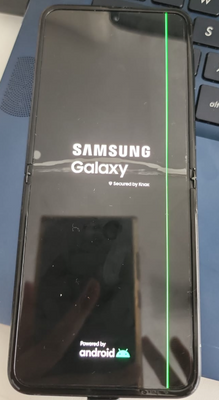Software Update Woes: Users Face Screen Glitches in Recent Smartphone Models
Imagine installing a software update for your phone, only to find that it renders your device almost unusable, forcing you to purchase a new one.
This has been the ironic reality for over 200 customers at the phone repair chain, Mister Mobile, in just the first two weeks of November.
Customers have been flocking to phone repair shops, discovering green, white, or even pink lines stretching across their phone screens.
Remarkably, a significant number of these phones did not experience any physical damage. These customers did not even drop their phones.
Aiya, it’s because the phone model is too old la.
Not at all. Contrary to this belief, the affected models are quite recent, made from 2020 onwards. They include well-known, reputable brands like Samsung, Apple, Oppo, and OnePlus.
The Culprit: Dropping of New Updates, Not Phones
Starting in late October, there was a noticeable increase in Facebook posts describing incidents where mysterious lines appeared on users’ phones, absent any physical damage or drops.

These images show vertical green or pink lines that, although not overly thick, are sufficiently distracting and disrupt daily phone usage.
A common thread among these Facebook posts is that the users had recently installed a software update, specifically Android 14 or the newly released Android 12.1/12L, on 4 Oct.
This update was intended to enhance features mainly for foldable phones and other specialized devices.
Alan Tan, the founder of Mister Mobile, explained in an interview with The Straits Times how newer phones, particularly those with foldable or curved screens, are more susceptible to such issues.

These modern designs, supporting larger panels and higher refresh rates for smoother scrolling, necessitate more connection points within a compact chassis.
Over time, these points are more prone to dislodging or tearing.
Additionally, certain software updates require the phone to activate previously unused linkage points, which may already be damaged, thus leading to screen glitches.
From Jan 2022 to just last week, the Consumers Association of Singapore (Case) received only 12 complaints about such glitches, a stark contrast to the surge in repair requests over the past two weeks.
Case has intervened on several occasions to assist customers in resolving disputes with phone sellers.
High Repair Costs and Uncertain Success Rates
Sometimes, repairs are provided free of charge.
However, repair costs can be steep, sometimes exceeding $300, depending on the phone model.
Furthermore, repairs may not be feasible if mobile repair shops lack the necessary equipment to mend breaks in the panel’s circuitry.
Desmond Goi, co-founder of Lite Mobile, which operates seven outlets in Singapore, explained that it is possible to fix the ribbon within the circuit, but that requires specific equipment and doesn’t guarantee success.
At the end of the day, it’s more economical to buy a new phone.
While Samsung and OnePlus are aware of this situation, the advice received was only to turn the damaged phones in to the nearest authorised centres for checks.
Would you be jailed for being half-naked in public? Well, the answer will shock you. Seriously. Watch this to the end and you'll understand:



